Every time I make it to Marbella during the shoulder season—those golden months of spring and autumn—I can’t help but wonder why more people don’t see the city like this. The beaches feel calm, restaurants actually have space, and there’s this perfect breeze for walking along the marina.
You get to soak up that famous Marbella sunshine and chic vibe, but without the stress and summer holiday crowds.
There’s just something about waking up to gentle sunlight, knowing it’s warm enough for a swim but still cool enough for a stroll under the palms. I love grabbing coffee at an outdoor café with no line, or wandering Old Town at my own pace.
The shoulder season always brings just the right buzz to Marbella—lively enough to feel fun, but never overwhelming.
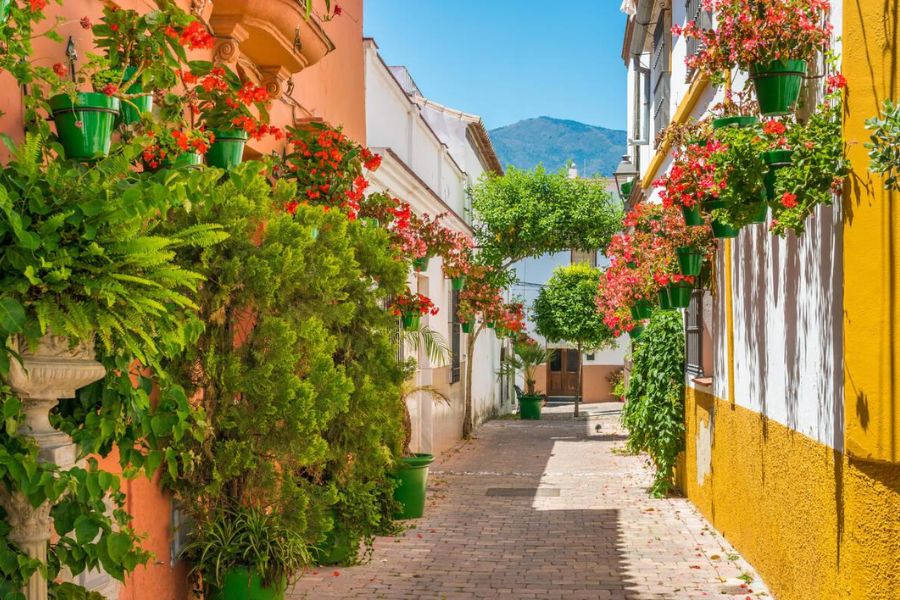
When I pick a shoulder season holiday in Marbella, I get to enjoy 300 days of sunshine a year, mild temps, and a genuinely friendly vibe from locals and fellow travelers. Every visit leaves me feeling like I’ve stumbled onto the city’s best-kept secret.
Why Visit Marbella in Spring or Autumn?
Catching Marbella during the spring or autumn lets me enjoy the warm Mediterranean climate and see the sights without elbowing my way through packed summer crowds.
There’s a softer, more authentic side to Marbella in these months—the one locals love and most visitors miss.
Embracing the Mediterranean Climate
Spring (April to June) and autumn (September to October) greet me with mild, sunny days—perfect for lounging on the Costa del Sol’s beaches or wandering shaded Old Town streets. Rain hardly shows up, and the heat never gets suffocating like in July or August.
I find the sea warm enough for swimming, especially from late May on. Outdoor cafés spill into the plazas, and hiking in the Sierra Blanca mountains turns into a real treat with crisp mornings and wide-open views.
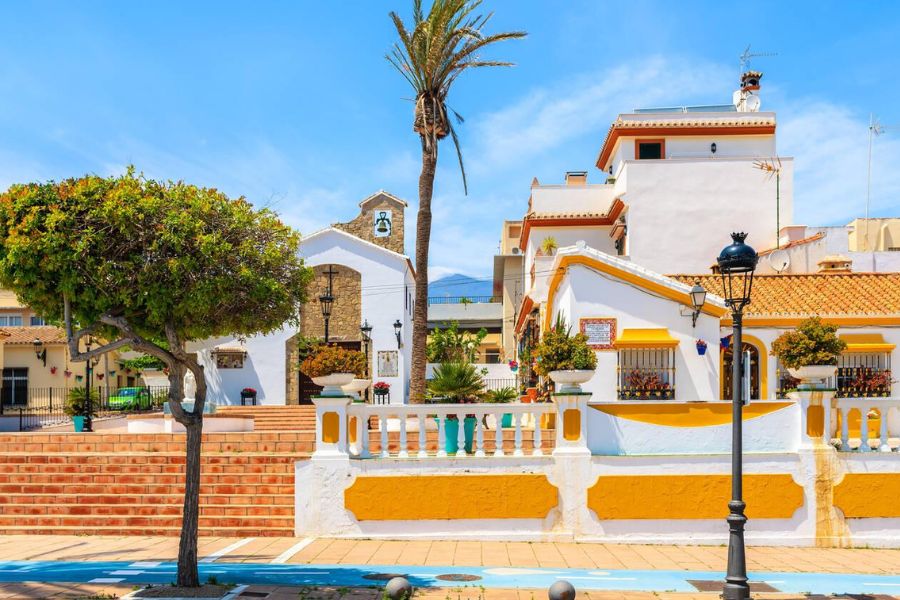
Long daylight hours make it easy to squeeze in sightseeing, beach picnics, and even those late harborside dinners.
Average Temperatures:
| Season | Daytime High | Nighttime Low |
|---|---|---|
| Spring | 18-23°C | 12-15°C |
| Autumn | 20-26°C | 13-17°C |
There’s always plenty of sun, but never too much.
Escaping Peak Summer Crowds
One of the best parts for me? Fewer tourists. The summer crowds thin out, and suddenly there’s space to breathe and roam through Marbella’s highlights. I almost never have to wait for a table, even at popular beachfront chiringuitos or trendy tapas bars.
Museum visits, boutique shopping, and walks along the waterfront become way more relaxed without the lines and noise. On the sand, I can actually spread out my towel without bumping into strangers.
Iconic spots like Puerto Banús marina or Alameda Park turn peaceful again, making it easier to snap those perfect photos.
With less traffic, quick trips to nearby white villages—or up the coast—feel like a breeze. It’s like I’m sharing Marbella with locals, not fighting for a spot in the crowd.
Unveiling Marbella’s True Character
Marbella’s personality really shines in the shoulder seasons. Locals have more time to chat, and their laid-back pace rubs off on me. Events around this time—from spring food fairs to autumn art festivals—feel more welcoming, almost like they’re happening just for me.
I love wandering colorful markets, checking out less crowded galleries, and catching sunsets over the Mediterranean from a quiet promenade.
The city isn’t just about nightlife and parties; there’s history, style, and culture waiting if you look for it.
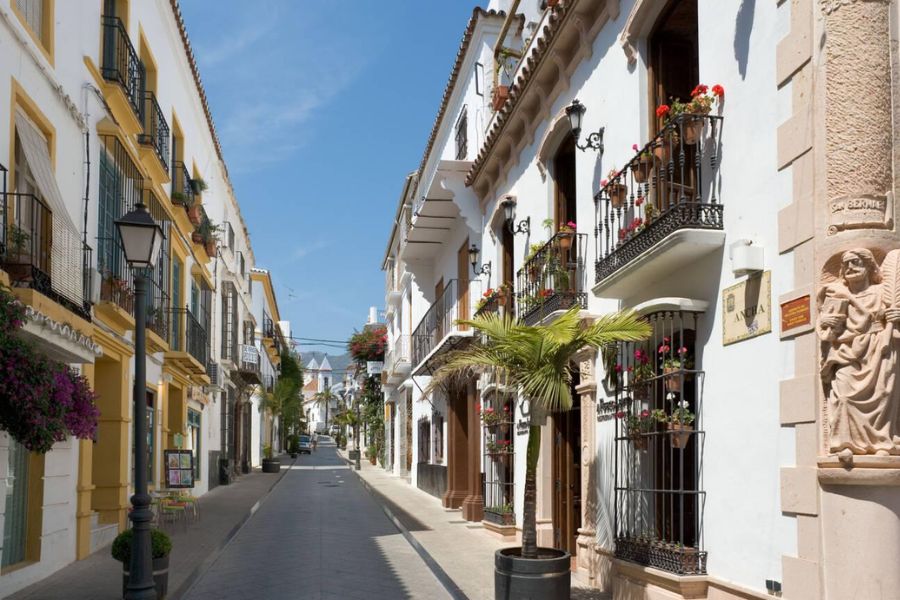
Menus show off authentic Spanish cuisine, and little details stand out—blooming flowers in spring, golden evening light in autumn. I always feel closer to Marbella’s heart. It’s a perfect time to slow down and really take in what this Costa del Sol gem offers.
Enjoying the Sunshine: Outdoor Activities and Adventures
Marbella’s shoulder seasons bring mild weather and fewer crowds, making outdoor activities so much easier to enjoy. I find time to explore nearby towns, green spaces, and even try out a new sport or two.
Exploring Gardens and Parks
Walking through Marbella’s gardens and parks always makes my visit feel peaceful and fresh. Alameda Park, right in the city center, is full of marble walkways, tiled benches, and tall palms.
I like sitting in the shade, listening to local birds, and watching kids run around the fountains.
A trip to the Paseo Marítimo is a must for me. The seaside promenade stretches for miles with flower beds and ocean views. Sometimes, I just take a book and relax on a bench, or rent a bike to see more of the coast.
For a real escape, I head to nearby botanical gardens, like Jardín Botánico Molino de Inca in Torremolinos. It’s just outside Marbella, but the mix of native plants, water features, and walking paths feels like a different world. Early spring brings bursts of color from blossoming trees, while autumn’s steady warmth makes a picnic in the grass totally doable.
Charming Drives and Day Trips
With quieter roads in spring and autumn, I love taking scenic drives through the Andalusian countryside. My favorite route is the winding road up to Ronda, famous for its deep gorge and historic bridge.
I take my time, stop for photos, and sometimes duck into a local café for coffee and pastries.
Another classic outing is Gibraltar, just over an hour away by car. It’s not every day you get to cross into a British territory and see wild monkeys on the Rock! The drive is smooth, with the Mediterranean on one side and mountain views on the other.
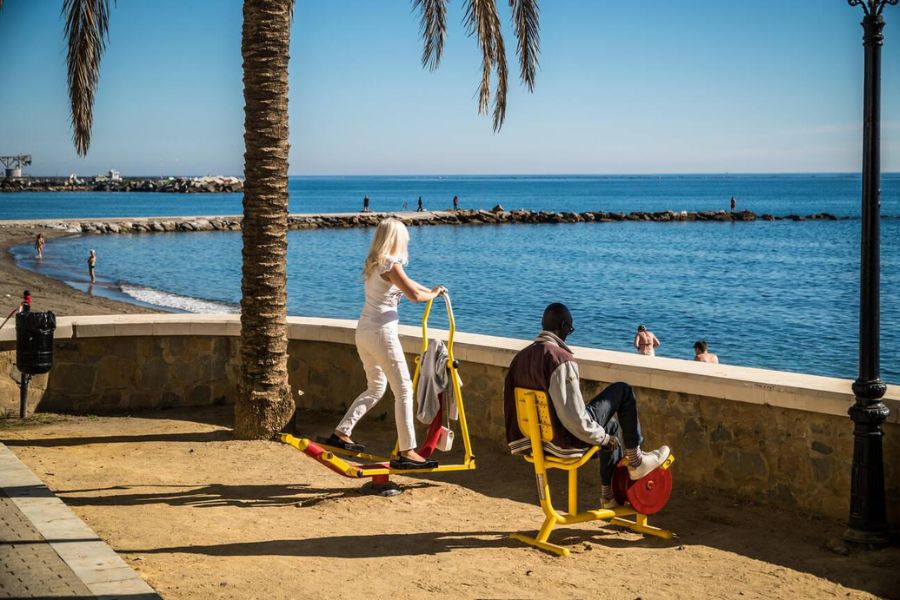
If I’m up for more adventure, the Sierra Nevada is within reach for a full-day trip. Even without snow, the mountains offer scenic trails and crisp air—a nice switch from Marbella’s sandy beaches.
Sports and Recreation for All
Shoulder season is perfect for getting active, thanks to comfortable temps and more space at Marbella’s many sports facilities. I usually start my mornings with a walk or bike ride along the coast—the views make it feel less like exercise.
Golf is huge here, and I find courses like Los Naranjos and Aloha Golf much less crowded outside summer. Booking tee times is easy, and I never feel rushed.
If I’m with friends, tennis and paddle courts are a fun way to work up an appetite before lunch.
Water sports stay available through most of spring and autumn. I like to try paddleboarding or kayaking, especially when the sea is calm. There’s also horseback riding in the hills around Marbella, which gives me a fresh perspective on the landscape.
| Outdoor Activity | Best Location | Why I Recommend It |
|---|---|---|
| Walking/Jogging | Paseo Marítimo | Relaxing ocean views |
| Golf | Los Naranjos, Aloha | Easy bookings, great greens |
| Day Trips | Ronda, Gibraltar | Unique sights, history |
| Horseback Riding | Hills near Marbella | Scenic countryside trails |
Experiencing Marbella’s Culture and Style
Exploring Marbella in spring or autumn lets me dive into its culture and lively social scene without the crush of crowds. The city’s art, music, and unique seasonal events always add a little extra magic to each visit.
Art Galleries and Museums
When I wander Marbella’s old town, I never skip the local art galleries. These places show off contemporary Spanish artists, and you’ll find everything from bold impressionist landscapes to quirky modern sculptures.

Notable locations:
- Museo del Grabado Español Contemporáneo: A must-see for printmaking fans, tucked inside a beautiful old hospital building.
- Galería de Arte Alaire: All about modern art, and super welcoming—even if you’re just browsing.
- Ralli Museum: Full of Latin American and European works, in a bright, peaceful spot near the coast.
Marbella’s museums often bring in temporary exhibitions during the shoulder season, so each visit feels a bit different. I like to go mid-morning or just before closing for a quieter experience.
A lot of museums let me snap photos, so I usually bring my travel journal to sketch or jot down quick notes.
Vibrant Local Music Scene
Music really shapes Marbella’s personality. When summer crowds thin out, I notice more locals mixing with visitors at the city’s cozy music bars and outdoor spots.
Live flamenco nights pop up at intimate places like La Catarina or in hotel lounges along the Golden Mile. One evening, I stumbled onto a jazz night in a small plaza—acoustic guitar echoing off cobblestones, families listening nearby.
Plenty of bars and cafés offer free shows, especially on weekends. Spring and autumn also bring pop-up performances, and open-mic nights give a peek into another side of Marbella’s music culture. I find these moments make stronger memories than the big summer concerts.
Seasonal Events and Festivals
Shoulder season lets me enjoy Marbella’s culture in a much more relaxed way. In spring, local fairs like Feria de San Bernabé celebrate the city’s patron saint with parades, traditional dress, and street food stalls.
There’s music and dancing, but it never gets overwhelming.
Autumn brings harvest festivals and Día de la Virgen del Rosario, filling the streets with flower offerings and local choirs. I like to check the events calendar at the tourist office—they’ll list food markets, memoir readings, and sometimes classical concerts in old churches.
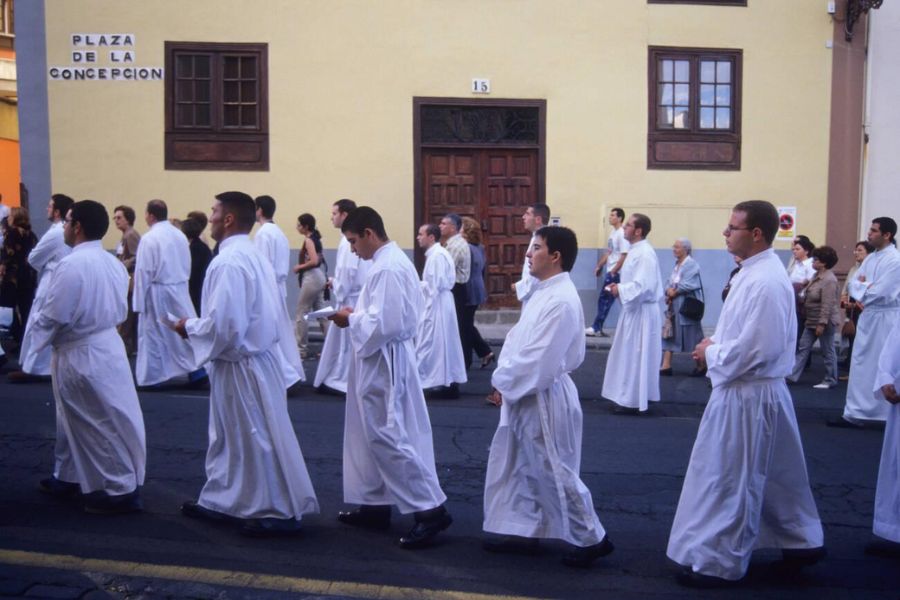
At these events, I often meet local artists and musicians, which makes the experience richer. Walking home after an evening of folk music or sampling autumn treats at a market, I feel connected to Marbella’s story in a way I never do in high summer.
A Culinary Journey: Dining in the Shoulder Season
Warm days and cool evenings make dining out in Marbella extra enjoyable. Without the summer crowds, I find it easy to get a table at top restaurants and take my time exploring the food scene.
Discovering Local Fare and Menus
One of my favorite things about visiting Marbella in spring or autumn is actually getting to chat with chefs and staff. With fewer diners, I often get personal recommendations or even the story behind a dish.
Walking through Old Town, where Andalusian soul lives in the maze of whitewashed streets, I find menus that highlight local flavors—grilled sardines, espeto (sardines on a stick), gazpacho, and classic tapas. Seasonal veggies, olives, and seafood always taste fresher since there’s less strain on supplies.
Insider Tip: Many places roll out special shoulder season menus—shorter, more focused, and based on what’s best at the market. I find it makes tasting several local plates in one meal so much easier.
Savoring Sherry and Andalucía Wines
Trying local wines is a highlight for me. Sherry from nearby Jerez shows up on most wine lists, and waiters love recommending pairings.
In shoulder season, I get to chat with sommeliers and learn the difference between a crisp Fino and a sweeter Pedro Ximénez. For me, a chilled glass of Manzanilla sherry with salty olives is the perfect start to dinner.
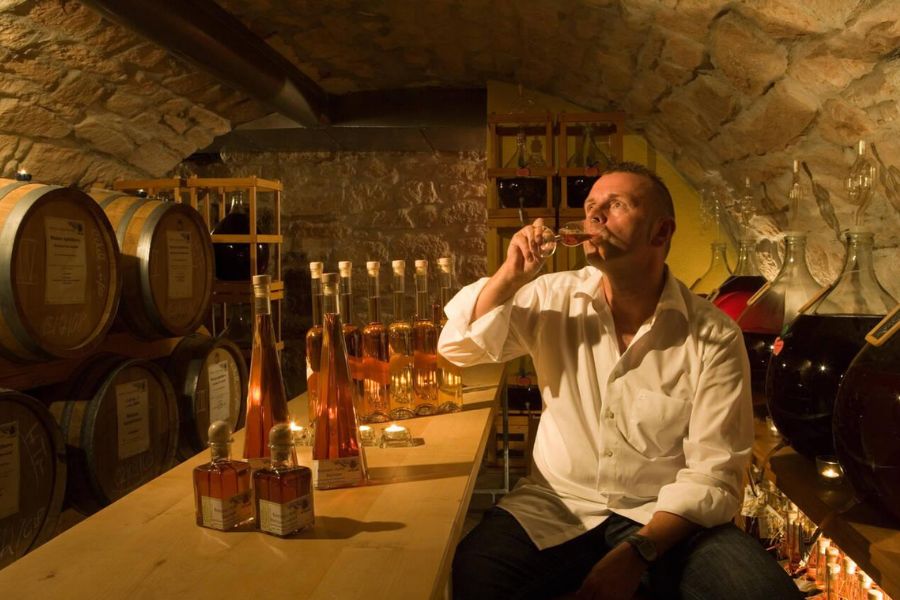
Andalucían reds and whites are more common than most people think. Vineyards just inland produce bottles that pair well with everything from seafood to lamb. When the patio is quiet, I like to linger over a glass and taste a bit of the region’s history.
Stylish Seaside Meals
Eating by the sea is a must in Marbella, especially with spring and autumn sunshine. Beachfront chiringuitos aren’t crowded, and staff seem more relaxed. I can pick a table with a view and order fresh paella or sushi at spots like Marbella Grand Cafe, which is known for its sushi and panoramic views.
Sometimes, I treat myself to a three-course lunch at a Michelin-starred restaurant—no months-ahead booking required. Watching the sunset or enjoying a long midday meal by the water feels even more special outside peak season.
The salty breeze, gentle sun, and sound of waves just make every bite memorable.
Authentic Connections: People, Heritage, and Hidden Villages
In Marbella’s shoulder season, travelers notice more than just sunshine and fewer crowds. It’s a time when people, culture, and history feel closer, and the stories of hidden villages and real connections come to life.
Exploring Pretty Andalusian Villages
I’ve noticed the quieter months are just right for wandering through small villages near Marbella—think Ojén, Mijas, and Istán. These whitewashed towns rest quietly among green hills, their winding alleys dotted with bright flower pots on every windowsill.
One morning in Ojén, I watched locals chatting outside bakeries, swapping news and homemade pastries. The pace here feels gentle. With every turn, I get a peek into daily life—old churches, tiny markets, and plazas where kids kick around a soccer ball.
Here’s a quick table of three of my favorite villages to visit:
| Village | Distance from Marbella | Highlight |
|---|---|---|
| Ojén | 8 km | Olive oil museum |
| Mijas | 34 km | Donkey-taxi rides |
| Istán | 16 km | Natural water springs |
In the quiet squares, I find it easy to start up a conversation and actually feel like part of a real Andalusian village.
Stories of Friendship and Community
One spring, I met a group of American women who come to Marbella every year. We bonded over coffee at a shady café, swapping stories about our different lives.
Locals welcomed me with open arms, inviting me to join their Spanish cooking class. Here, friendship just happens—on a hiking trail, at a village market, or learning to cook paella together.
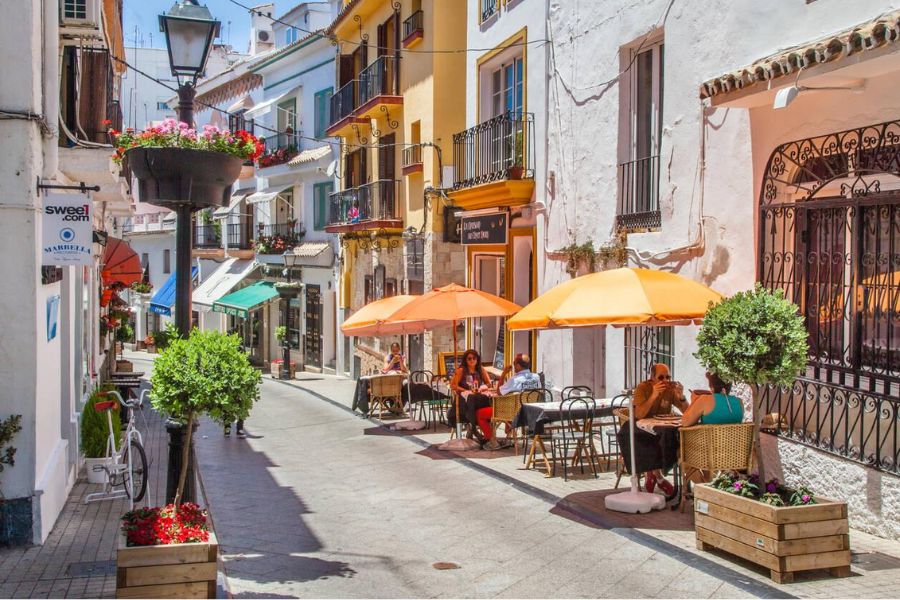
Small gatherings can turn into big memories. Even visitors like me, from far away, end up feeling part of the community, especially in these slower seasons when there’s more time for real connection.
Cultural Insights: Ethnography and Heritage
Marbella and the nearby villages carry layers of history shaped by many cultures—Roman, Islamic, and others. When I wander the old town, I spot hints of Marbella’s Moorish past along the narrow lanes, with arches and old walls showing signs of earlier times.
Locals take real pride in their heritage, sharing stories about Al-Andalus or family traditions that have lasted for centuries. The sense of local identity here feels strong, shaped by tales of past rulers, religious customs, and even waves of nationalism.
Ethnography—studying people and cultures—comes alive when I chat with residents. They openly talk about how Islam once influenced local art, food, and buildings. Over lunch, I heard stories about small “harems” or women’s quarters in old village homes, and how modern life has changed those traditions.
Seeing Marbella through these local stories makes every walk and meal feel richer.
Practical Travel Information for Spring and Autumn
Packing smart, knowing how to get around, and figuring out the basics of immigration and etiquette really shape every trip to Marbella in spring and autumn. My favorite visits always go smoother with a bit of planning, and just a few details can make the whole experience a lot more enjoyable.
What to Pack for Marbella’s Shoulder Season
Marbella in spring and autumn stays sunny, but the temperatures feel milder than summer. I always pack layers—light sweaters or a denim jacket—since mornings and evenings can get cool, especially near the water.
During the day, T-shirts and shorts usually work, but I go for breathable fabrics because afternoons can still get warm. A compact umbrella or light rain jacket helps for those rare, short showers. Sunglasses and sunscreen are always in my bag, even in spring, since the sun’s still strong.
For shoes, I stick with comfortable walking shoes for exploring Old Town, and I throw in a pair of sandals for the beach or dinner out.

I always bring a small day bag, a power adapter (Spain uses type C or F plugs), and a reusable water bottle. If I’m planning to visit places like Astoria or take a day trip, I pack a swimsuit and something a bit dressier for Marbella’s stylish restaurants.
Navigating Local Transportation
Getting around Marbella during the shoulder season feels way less hectic than in summer. I love walking around the historic center since everything’s close together.
The local bus system runs reliably and stays much less crowded in spring and autumn, with routes connecting main attractions and nearby areas like Puerto Banús. Taxis are easy to find, and I usually use an app or grab one at a stand.
If I want to explore more of the Costa del Sol, renting a car is pretty straightforward—just remember to bring a driver’s license (and an International Driving Permit if you’re from outside the EU). Public bikes and electric scooters add a flexible, fun way to see more of the city at my own pace.
Parking in central Marbella gets easier outside peak season, but honestly, I find using public transport or walking saves a lot of hassle. The seafront promenade, Paseo Marítimo, is perfect for a bike ride or just a slow stroll.
Understanding Immigration and Local Etiquette
When I arrive in Spain, including Marbella, I go through standard Schengen immigration if I’m coming from outside the EU.
Most tourists need passports valid for at least three months past their planned departure date.
A lot of nationalities get to stay for 90 days within any 180-day period.
I usually find the immigration process at Málaga Airport, the closest big hub, pretty smooth.
Spring and autumn are the best times for short lines—summer gets hectic.
Travelers from outside the EU should have proof of onward travel and accommodation ready.
Sometimes, they’ll also want to see health insurance details.
Politeness really matters in Marbella.
A simple “hola” or “gracias” goes a long way.
Service in restaurants and shops feels relaxed, but it’s always friendly.
You don’t have to tip, but people appreciate it if you round up or leave 5-10%.
If I visit places like Astoria nearby, I try to respect the local customs.
It helps to dress appropriately at religious or historic sites.
Being patient during the slower afternoon siesta pace lets me enjoy the vibe a lot more.

